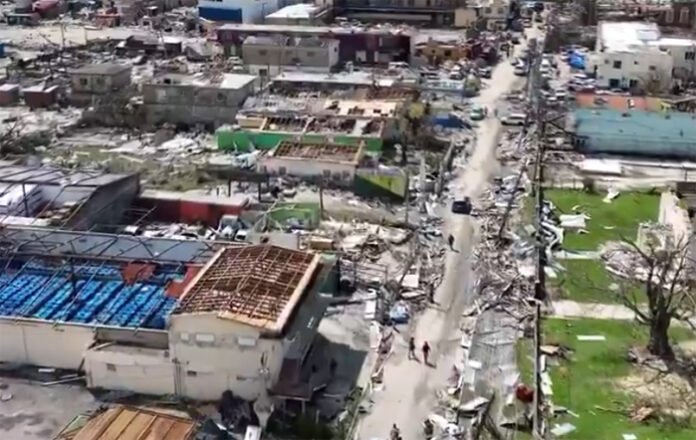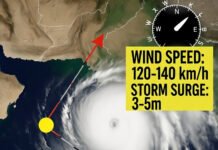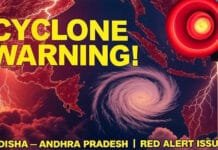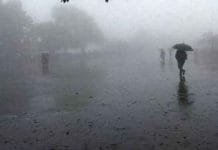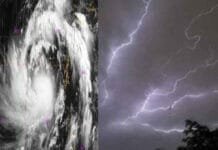Hurricane Melissa Ravages the Caribbean: Thousands Displaced, Islands in Crisis
Port of Spain, November 1, 2025:
The Caribbean is reeling under the catastrophic impact of Hurricane Melissa, one of the most powerful storms to hit the region in over a decade. Packing sustained winds of 200 km/h (124 mph) and torrential rainfall, the Category 5 hurricane has left a trail of devastation across Barbados, Saint Lucia, Dominica, and Puerto Rico, forcing thousands to flee and prompting urgent international relief efforts.
Local authorities describe scenes of total destruction, with collapsed homes, uprooted trees, and submerged roads stretching for miles. Early estimates from the Caribbean Disaster Emergency Management Agency (CDEMA) indicate over 80 fatalities and nearly 300,000 people displaced across multiple island nations.
“It’s a humanitarian crisis. Our hospitals are overwhelmed, power is down, and communities are cut off. We need help — fast,”
— Prime Minister Mia Mottley of Barbados.
🌀 A Storm Unlike Any in Recent Memory
Meteorologists say Hurricane Melissa intensified rapidly due to record-high sea surface temperatures, fueled by ongoing climate change. The U.S. National Hurricane Center (NHC) confirmed that the storm reached peak intensity late Thursday night before making landfall in Barbados.
Satellite imagery showed massive cloud bands spanning nearly 1,000 kilometers, dumping over 500 mm of rain in some areas within 48 hours. Experts warn of secondary flooding and landslides, especially in mountainous islands like Dominica and Saint Vincent.
“Melissa’s behavior mirrors that of climate-fueled superstorms — rapid intensification, unpredictable paths, and prolonged rainfall,”
— Dr. Elena Ruiz, Senior Meteorologist, NHC.
🏚️ Scenes of Destruction Across the Islands
In Barbados, the southern coastline has been completely flattened in parts, with entire neighborhoods washed away. Power grids are down, and the main airport remains closed due to runway flooding.
Dominica’s interior regions have reported multiple landslides, cutting off access to remote villages.
In Puerto Rico, emergency sirens echoed throughout the night as Melissa’s outer bands caused massive flash floods and power blackouts. The island’s energy authority reported that over 1.4 million homes were without electricity as of Saturday morning.
“Our island has gone dark again. It feels like María all over — but worse,”
— Rafael Torres, resident of San Juan.
🚨 Governments Declare States of Emergency
Barbados, Saint Lucia, and Puerto Rico have all declared national emergencies, calling for immediate aid.
Emergency shelters are operating beyond capacity, while naval vessels from Trinidad & Tobago and the U.S. Coast Guard are delivering medical supplies and food rations.
India, Canada, and the European Union have each pledged disaster relief funds, while the United Nations has dispatched rapid-response teams to coordinate humanitarian logistics.
“We are witnessing the brutal consequences of climate inaction,”
— Antonio Guterres, United Nations Secretary-General.
“The world must not abandon the Caribbean. These nations contribute the least to global emissions, yet they suffer the most.”
💧 Climate Crisis in Focus
Hurricane Melissa reignites the debate on climate justice and global warming, with environmental organizations calling it a wake-up call for major emitters.
Scientists point to the fact that the Caribbean’s ocean temperatures have risen by 1.4°C since 2000, creating perfect conditions for hyper-intense storms.
A report by Climate Analytics warns that without drastic emission cuts, Category 4–5 hurricanes could become annual occurrences in the region by 2035.
“Melissa isn’t just a natural disaster — it’s a human-made tragedy,”
— Dr. Marcia Douglas, Climate Researcher, University of the West Indies.
🧭 Economic Impact: Billions in Damage
Preliminary assessments suggest that Hurricane Melissa may have caused $15–20 billion in damages, including losses in tourism, agriculture, and infrastructure.
Barbados’ famous beachfront hotels have been reduced to debris, and Saint Lucia’s banana export industry — a key source of income — faces total ruin.
Insurance firms expect the storm to become the costliest Caribbean hurricane since 2017’s Irma and Maria.
Economist Dr. Jonas Hall notes:
“The region’s recovery could take years. Without international financial support and climate-resilient rebuilding, the economic aftershocks will be long-lasting.”
🧍 Humanitarian Response and Hope
Despite the devastation, stories of resilience have emerged. Local fishermen in Saint Lucia used their boats to rescue stranded families, while volunteers in Barbados have turned schools into makeshift kitchens.
Social media is flooded with messages of solidarity under the hashtag #CaribbeanStrong.
“We’ve lost everything — but not our spirit,”
— Carla James, teacher, Dominica.
International NGOs like the Red Cross, Oxfam, and UNICEF have launched donation campaigns to provide clean water, medical aid, and temporary shelters.
The World Food Programme (WFP) is setting up logistics hubs in Trinidad and Jamaica to support relief distribution.

